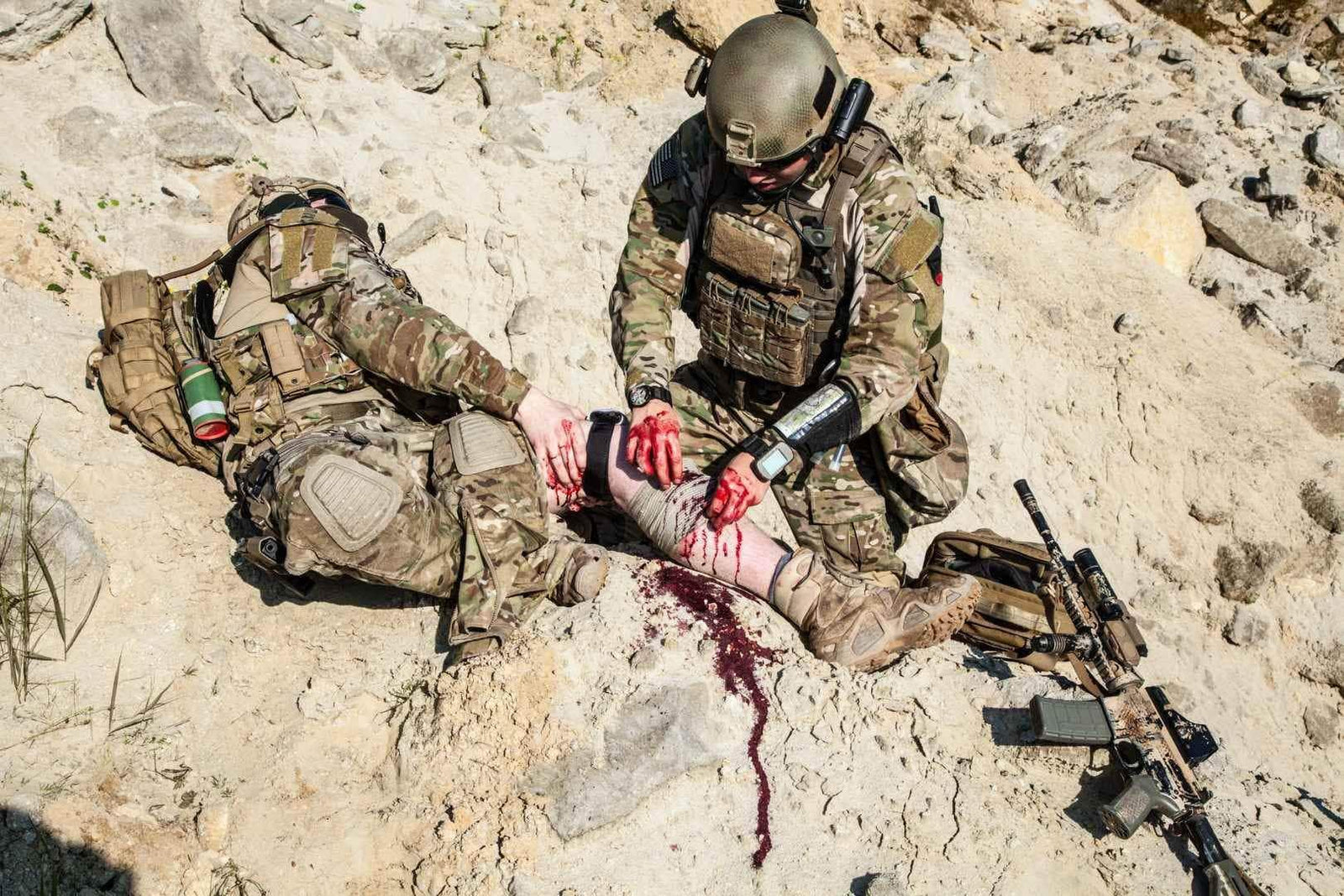Military First Aid Kit
Unlike a civilian first aid kit, a soldier's medical kit must contain items that can quickly treat a war injury. Essential in the field, an individual first aid kit (or IFAK in English: Individual First Aid Kit) is personal and will allow doctors, nurses, or rescuers to provide you with the necessary first aid in case of an emergency (fracture, sprain, hemorrhage, etc.). But how to properly assemble a first aid kit? What medical accessories to choose depending on the mission? According to an American specialist in military medical equipment, there are 3 types of first aid kits: the basic kit, the level 1 kit, and the level 2 kit. The basic first aid kit was created for US Air Force soldiers during the Iraq war. It is the minimum you should have on you during maneuvers. It should contain:- 1 pair of EMT-type emergency scissors.
- 1 pair of disposable gloves.
- 2 sterile gauze pads.
- 1 coagulant dressing, such as Coalgan or QuickClot dressings.
- 1 tourniquet or emergency tourniquet.
- 1 self-adhesive bandage 3" wide (between 7 and 8 cm).
- 1 triangular bandage to serve as a sling to support the arm in case of a shoulder dislocation, for example.
- 1 compressive dressing with a tightening ring or Israeli bandage to stop bleeding.
- 1 medical adhesive tape 1" wide (between 2 and 3 cm).

The level 1 first aid kit is designed for field use to deal with more serious injuries.
- 1 pair of EMT-type emergency scissors.
- 2 pairs of disposable gloves.
- 1 roll of surgical tape.
- 1 nasopharyngeal airway with lubricant.
- 2 sterile gauze pads.
- 1 sterile abdominal patch.
- 1 tourniquet or emergency tourniquet.
- 1 compressive dressing with a tightening ring or Israeli bandage.

The level 2 first aid kit is made for severe injuries. It was created for use on the front line by professionals trained in handling a CAT tourniquet.
- 1 pair of EMT-type emergency scissors.
- 2 pairs of disposable gloves.
- 1 roll of surgical tape.
- 1 nasopharyngeal airway with lubricant.
- 2 sterile gauze pads.
- 2 sterile abdominal patches.
- 1 Asherman Chest Seal (ACS) for open chest wounds.
- 1 CAT tourniquet.
- 1 compressive dressing with a tightening ring or Israeli bandage.
- 1 ARS decompression needle.

As we can see, a first aid kit, regardless of its level (basic, 1, 2), should contain an average of 10 medical accessories. Of course, it is possible to add other first aid accessories if you still have space in your pouch; it is up to each person to choose and assemble their first aid kit according to their needs. For example, you can equip yourself with a second smaller medical pouch, comparable to a standard first aid kit found in civilian use, with: antiseptic, blister bandages, saline solution, burn ointment, etc. Regarding the container, you have plenty of choices; the most practical is to opt for a medical pouch with MOLLE loops, featuring compartments with elastic holders and a wide opening for quick and easy access to the contents.

